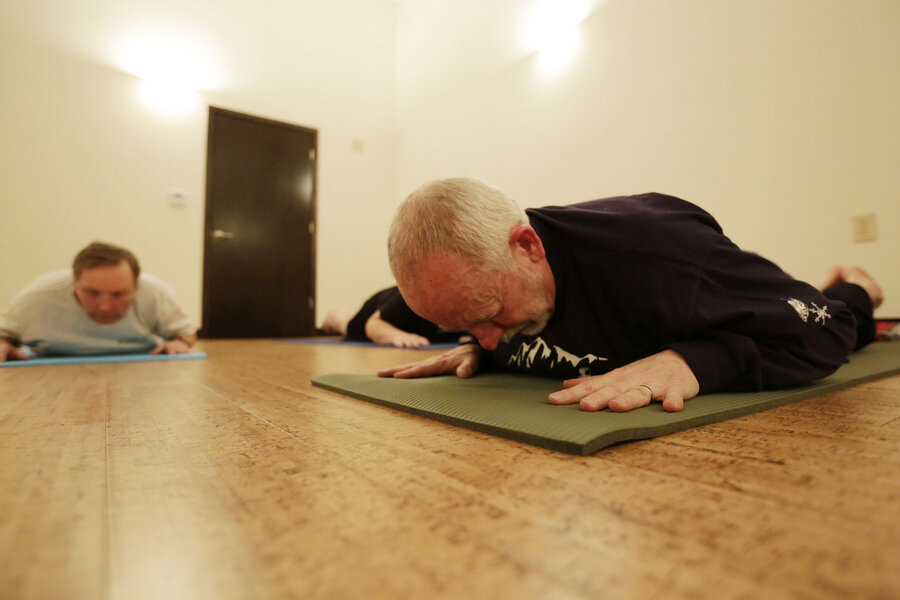Why more veterans are abusing opioids – and the push for alternate treatments
Loading...
Veteran Marine Tim Fazio returned from service in Iraq and Afghanistan and embarked on civilian life without, he says, any serious physical pain. Instead, his suffering took the form of survivor's guilt after many of his close friends died, he told the Center for Investigative Reporting. Nevertheless, he still received 4,000 oxycodone pills from Veterans Affairs doctors.
Those who have given the most to their country are being hit the hardest by a national epidemic, as America's veterans are the most common casualties of opioid abuse.
The biggest challenge in confronting the crisis lies in its origins. Doctors are prescribing the opioids to treat veterans who suffer from chronic pain, as an estimated 50 percent of older veterans do, Sarah Childress reported for PBS Frontline. In the case of opioids, however, the treatment is often proving at least as dangerous as the injury.
Overbooked doctors in the Veterans Affairs system have adopted a culture of using opioids as a "quick fix" for a variety of problems, including the emotional effects of war that are actually exacerbated by the drugs. Opioid prescription was the VA's sole strategy for managing chronic pain until several years ago, and such prescriptions increased by 270 percent over 12 years, the Center for Investigative reporting found in 2013.
“Giving a prescription, which they know how to do and are trained to do, is almost a default,” Dr. Stephen Xenakis, the retired commanding general of the Southeast Regional Medical Command for the Army, told Frontline.
Although random drug tests and strict enforcement policies have held down rates of illegal drug abuse in the armed forces, the number of veterans abusing prescription opioids tripled between 2005 and 2008 and is significantly higher than the general population, according to the National Institute on Drug Abuse.
The epidemic has become deadly for many. Veterans die of drug abuse and overdose at nearly twice the rate of the general population, and opioid prescription and cocaine are listed frequently on death records, according to a 2011 study under the Department of Veterans Affairs.
Some VA centers are trying to shift away from a drug-only approach, but the search for alternatives is complicated by strained resources, cost, and entrenched attitudes toward treatment and drug abuse.
“We do not have another silver bullet that we can say, ‘Instead of opioids, take this,’" Dr. Carolyn Clancy of the VA told Frontline. "It’s much more a matter of individualizing and trying different alternatives, and that can be really frustrating for patients as well as clinicians."
Some strategies target the problem directly by working with the veterans who are taking drugs, both legal and otherwise, but most are local initiatives. In Tulsa, Okla., where the VA hospital and clinic have issued an average of 1.6 opioid prescriptions per patient, a treatment court specifically for veterans works to break the hold of legal drugs, and it boasts a 90 percent success rate.
The VA has begun partnering with state-level programs, which have been more forward-thinking on opioid treatment thus far, in 37 states. Although their presence is still spotty, some VA centers have successfully employed yoga, physical therapy, and acupuncture to treat pain in all its forms.
Vietnam veteran Bill Miller overcame initial skepticism about yoga, and he now teaches a class for older men who want alternative routes to health and calm, Keith Uhlig reported for USA Today-Wisconsin.
"My target group is active, older men," Mr. Miller told USA Today. "I wanted to teach a style of yoga that is inclusive, welcoming those with chronic back pain, anxiety, depression or any number of other seeming limitations to a more active and happy life."






